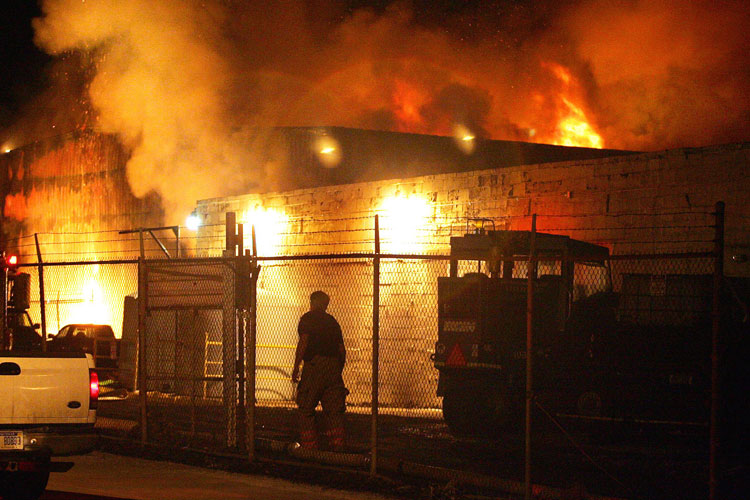All fires and explosions that are caused by combustible dust are preventable – even the most serious ones like the Imperial Sugar Company explosion of 2008 that took 14 lives and injured 38 others. This incident, in particular, occurred due to poor maintenance, poor equipment design, and poor housekeeping according to a report by the U.S Chemical Safety Board.
The food manufacturing industry experiences its fair share of dust fires and explosions. The OSHA National Emphasis Program found that:
- Food dust accounted for 23% of combustible dust incidents, one percentage point behind wood dust.
- The food products industry experiences the most combustible dust incidents with 24% of all incidents. Wood is second with 15%.
- The food manufacturing industry experiences so many incidents due to the high number of ingredients that cause problems.
It is for this reason that the NFPA has released several codes and standards to cover all risks in food plants and processes. They are as follows:
NFPA61: Preventing Fires and Dust Explosions in Agricultural and Food Processing Plants
This is the main food industry-specific standard for tackling combustible dust. It applies to:
- All facilities handling or processing all agricultural materials such as grains, flour, sugar, dairy powder etc.
- All facilities that handle and manufacture starch.
- Meal handling and seed preparation systems.
This standard is comprehensive and provides a guide for every aspect from ventilation to construction to pneumatic conveying to transfer operations.
Housekeeping Rules
NFPA 61 requires all dust to be removed simultaneously with operations. The main requirements are as follows:
- Keep a documented housekeeping program that clarifies the cleaning method and frequency.
- Compressed air should only be used when all machinery is turned off and all ignition sources are under control.
- If portable electric vacuums are to be used, they should be clearly listed for use in Class II, Division I and Group G as shown in NFPA 70.
- Vacuum Systems must be bonded and grounded and the hoses and couplings have to be conductive or static dissipative and grounded.
- The dust collection systems must be made of non-combustible materials. If the dust collection system shuts down, all related machinery must also shut down.
- For centralized vacuum cleaners, the system must have static-conductive cleaning tools and static-dissipative hoses. The air separator must have air filtration and explosion prevention systems.
NFPA 70: National Electrical Code
This code covers everything that’s related to the installation of electrical equipment in all industries.
Food manufacturers should be aware of the two main parts of this code:
Combustible dust definition – NFPA 70 dictates that dust particles that are 500 microns or smaller are a fire and explosion risk.
Hazardous locations – there are different classes of hazardous and non-hazardous locations. The classes not only define the wiring but the equipment used and the house cleaning rules used. The hazardous classes are determined by the risk that they present:
- Class I locations are risky because of combustible gases and vapors.
- Class II are dangerous due to combustible dust.
- Class III are dangerous due to ignitable fibers.
The NFPA is long and has close to 900 pages and this makes it almost impossible to summarize it. You should definitely go through it to know the housekeeping rules you must follow.
NFPA 652: Standard on the Basics of Combustible Dust
This standard was introduced in 2016 and covers what needs to be done to control combustible dust and explosions across dust types, industries, and processes. It was created to clarify the confusion between NFPA 61 (agricultural products), 484 (combustible metals), 664 (wood), 654(general manufacturing) and 655 (sulfur).
The NFPA requires a dust hazard analysis (DHA) for a proper review of the situation by identifying the potential danger and the dust involved. This requirement places the plant owner as the one responsible for coming up with a plan to mitigate the hazards and offer training in the facility.
Housekeeping
The cleaning method used must match the potential risk.
Vacuuming is the best method of cleaning.
Traditional methods of cleaning are allowed where vacuuming is not practical.
NFPA 654: Standard for the Prevention of Fire and Dust Explosions from the Manufacturing, Processing, and Handling of Combustible Particulate Solids
This standard is not specifically meant for food manufacturing environments but for chemical processing industries. However, it is used as a general standard. It is nearly identical to the NFPA 652.
Facility owners should also familiarize themselves with NFPA 68 and NFPA 69. They do not discuss housekeeping, but they apply to the food manufacturing industry.
Conclusion
The requirements for staying safe are stricter after the introduction of the NFPA 652. Familiarize yourself with the standards and apply what you have learned to keep your works, facility, and equipment safe.













